Torino FC
This article needs additional citations for verification. (January 2024) |
 | ||||
| Full name | Torino Football Club S.p.A. | |||
|---|---|---|---|---|
| Nickname(s) | Il Toro (The Bull) I Granata (The Maroons) Il Vecchio Cuore Granata (The Old Maroon Heart) | |||
| Founded |
| |||
| Ground | Stadio Olimpico Grande Torino | |||
| Capacity | 27,958[3] | |||
| Owner | UT Communication | |||
| Chairman | Urbano Cairo | |||
| Manager | Ivan Jurić | |||
| League | Serie A | |||
| 2022–23 | Serie A, 10th of 20 | |||
| Website | Club website | |||
|
| ||||
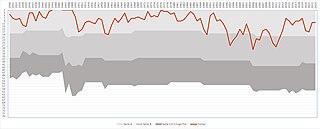
Torino Football Club (Italian pronunciation: [toˈriːno]), commonly referred to as Torino or simply Toro, is an Italian professional football club based in Turin, Piedmont. They currently play in Serie A.
Founded as Foot-Ball Club Torino in 1906, Torino are among the most successful clubs in Italy with seven
Torino plays all of its home games at the Stadio Olimpico Grande Torino (also known as the Stadio Comunale "Vittorio Pozzo" until 2006). The club's traditional colour is maroon, and its symbol is a rampant bull, the traditional symbol of the city of Turin, from which the club's nickname Il Toro (The Bull) is derived. Torino have a local rivalry with Juventus and the two sides contest the Derby della Mole.
History
The foundation and first steps
Football first arrived in the city of

The new game quickly supplanted the popularity of
In 1900, Football Club Torinese absorbed Internazionale Torino, and on 3 December 1906 at the Voigt brewery (now bar Norman) on Via Pietro Micca an alliance was formed with a group of Juventus dissidents, led by the Swiss financier
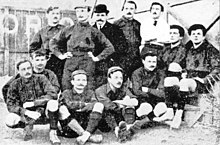
The first
Torino did not participate in the 1908 Italian Football Championship as a rule was passed which limited the use of foreign players.[citation needed] The club instead played in two popular "minor" tournaments: the coveted "Palla Dapples" (a silver trophy in the shape of a regulation football), won against Pro Vercelli; and an international tournament organised by La Stampa, which took place in Turin that year.[citation needed] Torino lost in the final to Swiss side Servette.[8]
In
The first scudetto

Heinrich Schönfeld, a forward, joined the team in 1923 and became the top scorer in the 1923–1924 Serie A. He scored 22 goals, in 20 games, scoring 51.1% of the team's goals.[9]
The club experienced its first success under the presidency of Count Enrico Marone Cinzano, who was responsible for building the
After the revoking of the prior scudetto, Torino were reconfirmed champions of Italy in the
After the resignation of Cinzano, the club began a slow decline in the early 1930s and often finished mid-table.[
In 1939–40, Torino finished in fifth place, and saw the arrival of club president Ferruccio Novo. Novo provided financial support to the club and utilised his skill as a careful administrator. With valuable contributions from Antonio Janni, Giacinto Ellena and Mario Sperone, Novo was able to build a team known as the Grande Torino.[10]
Grande Torino
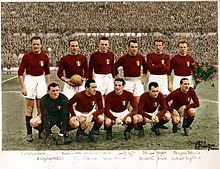
The club's greatest period is encapsulated in the Grande Torino, a team which won five titles in a row (not considering the interruption to the league in the 1944 Campionato Alta Italia, in which the Italian Football Federation (FIGC) in 2002 recognised only honorary value to Spezia) between 1942 and 1949, and the Coppa Italia in 1943 (due to this success, Torino was the first team to win the coveted Scudetto and Coppa Italia "double" in Italy during the same season).[citation needed] Torino's players formed the backbone of the Italy national team in this period, at one point fielding ten players simultaneously in the Azzurri.
The captain and undisputed leader of the team was
From relegation to the title

Difficult years followed in the aftermath of the tragedy. A slow decline led to the club's first relegation to Serie B, which took place under the name "Talmone Torino" in 1958–59.[citation needed] The stay in Serie B would only last one season, with Torino's return to the top flight in 1960–61.[citation needed] In 1963, Orfeo Pianelli assumed presidency. He appointed Nereo Rocco as manager and signed club icon Gigi Meroni, nicknamed "The Maroon Butterfly" (La Farfalla Granata).[12] In 1964–65, the team finished in third place.[citation needed]
On 15 October 1967, Meroni was killed while crossing the street after a league game.[13] Despite the tragedy, Torino finished the season in seventh place and won the Coppa Italia.[citation needed] The reconstruction of a winning team, initiated by the club president Pianelli, continued with the victory of another Coppa Italia in the 1970–71 season.[citation needed]
In the
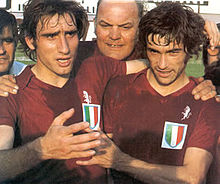
The same title race was repeated the next year in a season that saw Torino finish with 50 points behind Juventus's 51, a record points total for the 16-team league format.[
Journey in Europe and bankruptcy
At the end of the
In the
After a play-off lost on penalties in the
Torino achieved immediate promotion in the 2005–06 season after winning the play-offs.[citation needed] The following season, Torino escaped relegation in the penultimate round of matches.[citation needed] After three seasons, the club once again were relegated to Serie B.[citation needed] During the 2009–10 season, Cairo named Gianluca Petrachi as the new sporting director at Torino, but the club failed to gain promotion that season and the one following.[23][24]
Return to Europe
On 6 June 2011, the club officially announced
The 2014–15 season saw Torino reach the round of 16 of the Europa League, where they were eliminated by Zenit Saint Petersburg.[citation needed] In the league, Torino finished ninth, and in spring, won their first derby in 20 years.[citation needed] The following year, Torino finished the 2015–16 season in twelfth place, after which Ventura, after five years in charge, left the club for the Italy national football team.[citation needed] He was replaced by Siniša Mihajlović,[31] who finished the 2016–17 season in ninth place.[citation needed] He was replaced by Walter Mazzarri in January, who guided the club to another ninth-place finish at the end of the 2017–18 season.[citation needed] The following season Torino finished in seventh place and qualified for the Europa League after a five-year absence.[citation needed] Torino finished the season on 63 points, a club record since the introduction of the three points system in 1994.[32] Torino, however, would fail to enter the group stages of the 2019–20 Europa League after being eliminated in the play-offs by Wolverhampton Wanderers.[citation needed] In the league, after a strong start to the season, Torino collapsed and only obtained a minimum achievement of safety from relegation.[citation needed]
The following season was also negative, and marked by the alternation on the bench of managers
Colours and badge
This section possibly contains original research. (January 2024) |
The first uniform used by Torino only a few days after its foundation and in the first game of its history against
The most widely accepted story[
Since then, the traditional home uniform of Torino has been composed of a kit combined with traditionally
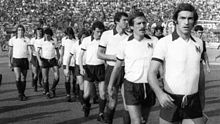
The Torino club badge has always featured a rampant bull, the symbol of the city of Turin.[42] The current badge was adopted in the 2005–06 season, the first following the bankruptcy of Torino Calcio.[citation needed] The "1906" on the left side of the shield was later added to denote the founding year of the historic Foot-Ball Club Torino.[42]
In the 1980s, the Torino badge was square in shape with a stylised bull and the words "Torino Calcio."[citation needed] This badge is still held in high regard by the fans, and in 2013 it was voted by the readers of Guerin Sportivo as the most beautiful club logo of all time.[43] From 1990 until the bankruptcy, the badge in use recalled the one used at the time of the Grande Torino, with the important difference that the right side of the oval crossed the letter "T" and "C" (initials of "Torino Calcio") instead of the letters "A", "C" and "T" (initials of "Associazione Calcio Torino").[citation needed]
In 2017, the Irish club Wexford Youths renamed itself Wexford F.C. and adopted a new crest with rampant bull, inspired by Torino's. Club chairman Mick Wallace is known to be a Torino fan.[44][45][46]
-
Crest of Torino (1936-1946)
-
Crest of Torino (1946-1983, 1990-2005)
Stadium
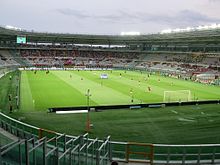
The first official match after the club's foundation,

From 11 October 1925 until the end of the
Torino played the entirety of the
Built specifically for the
The Stadio Filadelfia also served as the training ground of Torino from 1926 to 1993. More recently, from 2006 to 2017, the team's training base was the Sisport di Corso Unione Sovietica.[50] In the 2017–18 season, Torino returned to training at the reconstructed Filadelfia.[51]
Players
Current squad
- As of 2 February 2024[52]
Note: Flags indicate national team as defined under FIFA eligibility rules. Players may hold more than one non-FIFA nationality.
|
|
Out on loan
- As of 1 February 2024
Note: Flags indicate national team as defined under FIFA eligibility rules. Players may hold more than one non-FIFA nationality.
|
|
Primavera squad
Note: Flags indicate national team as defined under FIFA eligibility rules. Players may hold more than one non-FIFA nationality.
|
|
Notable players

- FIFA World Cup winners
 Giuseppe Dossena (1982)
Giuseppe Dossena (1982) Franco Selvaggi (1982)
Franco Selvaggi (1982)
- UEFA European Championship winners
 Giorgio Ferrini (1968)
Giorgio Ferrini (1968) Lido Vieri (1968)
Lido Vieri (1968) Andrea Belotti (2020)
Andrea Belotti (2020) Salvatore Sirigu (2020)
Salvatore Sirigu (2020)
Torino and the Italy national team
Among the players of Torino to win international honours with the Italy national football team are Adolfo Baloncieri, Antonio Janni, Julio Libonatti and Gino Rossetti, all winners with Italy at the Central European International Cup 1927–30, and who (with exception of Libonatti) also won bronze medals at the 1928 Summer Olympics.[53][54][55][56] Subsequently, Lido Vieri and Giorgio Ferrini were victorious at the 1968 European Championship with the Azzurri,[57][58] whilst Giuseppe Dossena won the FIFA World Cup in 1982.[59]
On 11 May 1947, during a friendly match between Italy and Hungary that finished 3–2, Vittorio Pozzo fielded 10 players who were at Torino; this remains the largest number of Italian players fielded from the same club in the same match in the history of the Italy national team.[60]
With 74 players having represented Italy throughout the club's existence, Torino is the fifth ranked Italian club for number of players capped by the Azzurri (sixth by number of total admissions).[61] Francesco Graziani is the Torino player who has accumulated the most appearances (47) and goals (20) for Italy.[60] On 11 June 2017, Andrea Belotti scored the hundredth goal of a Torino player in an Azzurri shirt, during a 2018 FIFA World Cup qualification match against Liechtenstein.[62]
Youth system
This section needs additional citations for verification. (January 2024) |
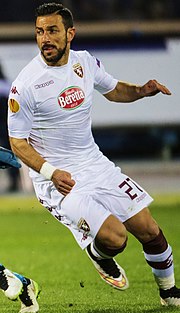
The Torino youth system is formed of four men's teams that participate in separate national leagues (Primavera, Beretti, Allievi Nazionali Serie A & B, and Allievi Nazionali Lega Pro) and three that participate at regional level (Giovanissimi Nazionali, Giovanissimi Regionali A & B).[63] Torino was one of the first Italian clubs to adopt a youth system, organised as early as the 1930s and is considered one of the best in Italy.[64]
Domestically, Torino hold the record for most championships won in both the
The players developed in the Torino youth system were nicknamed "Balon-Boys" in honour of Adolfo Baloncieri, the player and club icon who ended his Torino career in 1932.[65] The Torino youth system has developed numerous renowned players, including actor and journalist Raf Vallone, who devoted himself to a career in the arts after his debut for the first team.[66]
Non-playing staff
Board of directors
| Position | Name |
|---|---|
| Chairman | |
| Vice-chairman | |
| Director-general | |
| Sporting director | |
| Secretary general | |
| Technical Area Collaborator | |
| Team manager |
Staff
| Position | Name |
|---|---|
| Manager | |
| Assistant coach | |
| Fitness coaches | |
| Goalkeeping coach | |
| Technical Coach | |
| Match Analyst | |
| Head of Medical | |
| First team Doctor | |
| Massophysiotherapist | |
| Physiotherapist | |
| Physiotherapist - Osteopath | |
| Nutritionist | |
| Podiatrist | |
| Kit manager | |
Notable coaches
| Name | From | To | Honours |
|---|---|---|---|
| 1926 | 1927 | 1926–27 Divisione Nazionale[69] | |
| 1927 1934 |
1929 1936 |
1927–28 Divisione Nazionale, 1935–36 Coppa Italia | |
| 1942 | 1943 | 1942–43 Serie A, 1942–43 Coppa Italia | |
| 1945 | 1947 | 1945–46 Serie A, 1946–47 Serie A
| |
| 1947 | 1948 | 1947–48 Serie A | |
| 1948 | 1949 | 1948–49 Serie A | |
| 1967 | 1969 | 1967–68 Coppa Italia | |
Giancarlo Cadé
|
1969 | 1971 | 1970–71 Coppa Italia |
| 1971 | 1974 | ||
| 1975 1984 |
1980 1989 |
1975–76 Serie A | |
| 1990 1998 |
1994 2000 |
1992–93 Coppa Italia, 1990–91 Mitropa Cup |
Supporters and rivalries

The fans of Torino hold a number of distinctions, including the first ever organised supporters group in Italy, the Fedelissimi Granata, founded in 1951.
The fans of Torino are "twinned" with the fans of
The friendship between Brazilian club Corinthians and Torino dates back to 1914; that year, Torino became the first Italian club to travel South America on tour. The club played six friendly matches, two of which were against Corinthians, and despite the results on the field, the two clubs established friendly relationships. On 4 May 1949, when the Grande Torino team perished in plane crash of Superga, Corinthians paid tribute to the Italians in a friendly match against Portuguesa when its starting XI took to the field in Torino's kit.[74]
The Argentines of
Torino's historical rivalries are with
Honours
Domestic
League
- Italian Football Championship / Serie A
- Winners (7):
- Runners-up (7):
Cups
- Runners-up (1): 1993
European
- Winners (1): 1990–91
- UEFA Cup
- Runners-up (1): 1991–92
Others
- Torneo Internazionale Stampa Sportiva:
- Runners-up (1): 1908
- Anglo-Italian League Cup
- Runners-up (1): 1971
Friendly
- Winners (1): 2016
- Amsterdam Tournament:
- Runners-up (1): 1987
- Torneo Interfederale Coppa Torino:
- Runners-up (1): 1910
Notes:
Statistics and records
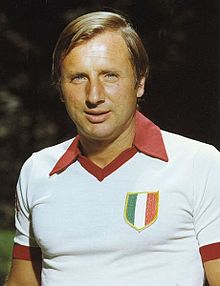
Torino is in 8th place in the Serie A all-time standings,[81] which takes account of all the football teams that have played in the top flight at least once.
In the Italian league, the team has finished in first place on eight occasions, although the club has only won seven championship titles,[82] seven times in second place and nine times in third place.[1] In 100 seasons, including 18 in various championships that preluded the single round format (Torino withdrew in 1908 and the 1915–16 Coppa Federale is not recognised), 73 in Serie A and 12 in Serie B, the club has finished on the podium in 23% of cases.[1]
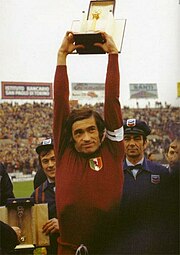
In the 2006–07 season, Torino, for the first time in history played at a level higher than Juventus: while the Granata competed in Serie A, Juventus took part in Serie B following the aftermath of the Calciopoli scandal.[1]
Giorgio Ferrini holds the club's official appearance record with 566 appearances (plus 56 goals) accumulated between 1959 and 1975.[83] The record for the most goals scored is held by Paolo Pulici, with 172 official goals (in 437 appearances) between 1967 and 1982.[84]
Eight different Torino players have won the
|
|
Divisional movements
| Series | Years | Last | Promotions | Relegations |
|---|---|---|---|---|
| A | 78 | 2021–22 | – | |
| B | 12 | 2011–12 | never | |
| 90 years of professional football in Italy since 1929 | ||||
Kit suppliers and shirt sponsors
| Period | Kit manufacturer | Shirt sponsor | |
|---|---|---|---|
| 1990–1991 | ABM[citation needed] | Indesit[citation needed] | |
| 1991–1993 | Fratelli Beretta[citation needed] | ||
| 1993–1994 | Lotto[citation needed] | ||
| 1994–1995 | Bongioanni[citation needed] | ||
| 1995–1996 | SDA Courier[citation needed] | ||
| 1996–2000 | Kelme[citation needed] | ||
| 2000–2001 | Directa[citation needed] | ||
| 2001–2002 | ASICS[citation needed ]
|
Conto Arancio[citation needed] | |
| 2002–2003 | Ixfin[citation needed] | ||
| 2003–2005 | Bavaria[citation needed ]
| ||
| 2005–2008 | Reale Mutua[citation needed] | Fratelli Beretta[citation needed] | |
| 2008–2009 | Kappa[citation needed ]
|
Renault Trucks[citation needed] | |
| 2009–2011 | Italporte[citation needed] | Dahlia TV[citation needed] | |
| 2011–2012 | Valmora[citation needed] | Aruba[citation needed] | |
| 2012–2013 | Fratelli Beretta[citation needed] | ||
| 2013–2015 | Suzuki[86] | ||
| 2015–2017 | |||
| 2017–2018 | SportPesa[citation needed] | ||
| 2019– | Joma[citation needed] | Fratelli Beretta[citation needed] | |
See also
- broken anchor]
References
- ^ a b c d e f g "La storia del Torino FC". torinofc.it/. Torino Football Club. Archived from the original on 26 December 2013. Retrieved 12 January 2014.
- ^ "Torino, finalmente l' accordo a Cairo va la maggioranza". repubblica.it. La Repubblica. September 2005. Archived from the original on 2 May 2014. Retrieved 1 May 2014.
- ^ a b "Archived copy" (PDF). Archived from the original (PDF) on 1 September 2015. Retrieved 8 April 2017.
{{cite web}}: CS1 maint: archived copy as title (link) - ^ "Layout 1" (PDF). Archived (PDF) from the original on 3 March 2016. Retrieved 6 May 2017.
- ^ "1906 - la nascita del Torino Football Club". Faccedatoro.altervista.org. Archived from the original on 5 November 2013. Retrieved 6 May 2017.
- ^ "::: Canottaggio Lombardia | Canottaggio allo stato puro :::". Archived from the original on 5 July 2013. Retrieved 20 May 2013.
- ^ "Edoardo Bosio and Football in Turin". Life in Italy. Archived from the original on 27 June 2017. Retrieved 1 August 2007.
- ^ RSSSF. "Torneo Internazionale Stampa Sportiva 1908 (Torino)". Archived from the original on 13 March 2007. Retrieved 20 June 2007.
- ^ "Before The 'D'...Association Football around the world, 1863-1937.: Capocannonieri". 27 February 2013. Archived from the original on 2 October 2020. Retrieved 22 September 2020.
- ^ a b c d "La Storia del Torino Fc". torinofc.it. Torino Football Club. Archived from the original on 26 January 2020. Retrieved 5 November 2014.
- ^ "The Guardian, 8 January 2019". BBC Sport. Archived from the original on 13 January 2019. Retrieved 12 January 2019.
- ^ "Quarantotto anni fa moriva Gigi Meroni, la Farfalla granata". 15 October 2015. Archived from the original on 14 April 2018. Retrieved 13 April 2018.
- ^ "Torino, 48 anni fa moriva Gigi Meroni. Un video per ricordare il mito granata". Archived from the original on 14 April 2018. Retrieved 13 April 2018.
- ^ Colombero, Pacifico, Agenda Granata 2, pp. 204–206
- ^ Colombero, Pacifico, Agenda Granata 2, pp. 208–209
- ^ a b Bernardi. Toro. Vol. 18.
- ^ Colombero, Pacifico, Agenda Granata 2, pp. 218–219
- ^ Colombero, Pacifico, Agenda Granata 2, p. 222
- ISBN 978-1-4116-8181-1. Archivedfrom the original on 20 July 2014. Retrieved 20 June 2014.
- ISBN 978-1-4116-8181-1. Archivedfrom the original on 20 July 2014. Retrieved 20 June 2014.
- ISBN 978-8889370087.
- ^ "Ufficiale, Marengo e Rodda lasciano a Cairo - Toro News". 19 August 2005. Archived from the original on 23 August 2018. Retrieved 13 April 2018.
- ^ "Archivio Toro". www.archiviotoro.it. Archived from the original on 19 March 2018. Retrieved 13 April 2018.
- ^ "Serie B, Torino fuori dai playoff - Calcio - Sportmediaset". Sportmediaset.it. Archived from the original on 23 August 2018. Retrieved 13 April 2018.
- ^ "Il Toro sceglie Ventura, è lui il nuovo mister". Torino.Repubblica.it. 6 June 2011. Archived from the original on 2 August 2017. Retrieved 1 August 2013.
- ^ "Ventura ha firmato, accordo per una sola stagione". ToroNews.net. 6 June 2011. Archived from the original on 23 May 2014. Retrieved 2 September 2011.
- ^ "Divertimento, dialogo e zero ansieToro, la rivoluzione di mister libidine". Archived from the original on 25 May 2012. Retrieved 29 April 2015.
- Parma, sixth, but excluded from European competitions due to their failure to obtain a UEFA license for economic reasons, see. Maurizio Galdi (29 May 2014). "Respinto il ricorso del Parma. Torino in Europa League. Ghirardi: "Calcio finito"". gazzetta.it. Archivedfrom the original on 13 July 2015. Retrieved 29 April 2015.
- ^ "MARCATORI – Immobile capocannoniere. Higuain quarto, Callejon sesto". tuttomercatoweb.com (in Italian). Archived from the original on 20 May 2014. Retrieved 20 May 2014.
- ^ "Cerci uomo-assist del 2013–14, batte tutti i record". corrieredellosport.it (in Italian). Archived from the original on 20 May 2014. Retrieved 20 May 2014.
- ^ Tom Webber. "Torino: Sinisa Mihajlovic replaces Giampiero Ventura". Goal.com. Archived from the original on 31 May 2016. Retrieved 6 May 2017.
- ^ "Il Torino chiude alla grande una stagione da record: 3-1 alla Lazio". Archived from the original on 25 May 2022. Retrieved 25 May 2022.
- ^ a b Welter (2013). p. 188.
- ^ "Il Toro compie 107 anni". buongiornobrasile.com (in Italian). Archived from the original on 2 May 2014. Retrieved 2 May 2014.
- ISBN 978-88-6087-178-7.)
{{cite book}}: CS1 maint: multiple names: authors list (link - ^ "Torino". uefa.com. Archived from the original on 22 February 2014. Retrieved 31 January 2014.
- ^ "TORINO FOOTBALL CLUB 1906". tcsecologranata.it (in Italian). Archived from the original on 2 May 2014. Retrieved 1 May 2014.
- ^ "Presentate a Bormio le maglie del Torino 2013–2014 firmate Kappa". Passionemaglie.it (in Italian). 22 July 2013. Archived from the original on 12 October 2013. Retrieved 31 January 2014.
- ^ a b "La nuova maglia da trasferta del Torino omaggia il River Plate". Passionemaglie.it. 12 September 2010. Archived from the original on 13 December 2014. Retrieved 6 May 2017.
- ^ "River Plate y Torino, unidos en la historia". taringa.net (in Spanish). 29 February 2008. Archived from the original on 14 March 2014. Retrieved 1 May 2014.
- ^ "dramma river-plate piange anche il torino". sport.notizie.it (in Italian). 27 June 2011. Archived from the original on 12 October 2013. Retrieved 31 January 2014.
- ^ a b "TOROshirts - La Storia della Maglia Granata". Toroshirts.it. Archived from the original on 13 December 2014. Retrieved 6 May 2017.
- ^ "I migliori marchi delle società di calcio". brand-identikit.it (in Italian). Guerin Sportivo. Archived from the original on 3 March 2016. Retrieved 11 April 2014.
- ^ Byrne, Cormac (3 February 2017). "League of Ireland club reveal new crest and it's very like someone else's". Archived from the original on 12 May 2017. Retrieved 6 June 2018.
- ^ Duffy, Emma (3 February 2017). "Change at Wexford FC as they drop the 'Youths' and unveil new club crest". Archived from the original on 29 April 2019. Retrieved 6 June 2018.
- ^ "Wexford FC's new crest looks a lot like an Italian club's crest - SportsJOE.ie". 4 February 2017. Archived from the original on 28 December 2019. Retrieved 6 June 2018.
- ^ "Storia". motovelodromo.com. Archived from the original on 31 October 2013. Retrieved 13 December 2014.
- ^ a b c "Lo stadio". torinofc.it. Archived from the original on 13 December 2014. Retrieved 13 December 2014.
- ^ "Torino stadium renamed". Football Italia. 24 April 2016. Archived from the original on 25 April 2016. Retrieved 6 May 2017.
- ^ "Risultati in tempo reale: Diretta calcio e sport di oggi". Archived from the original on 13 June 2018. Retrieved 3 August 2018.
- ^ "Stadio Filadelfia: l'Inaugurazione, porte aperte ai tifosi". 25 May 2017. Archived from the original on 3 August 2018. Retrieved 3 August 2018.
- ^ "Prima Squadra Serie A Tim 2022–2023". torinofc.it. Torino Football Club. Archived from the original on 15 January 2022. Retrieved 27 January 2022.
- FIGC. Archivedfrom the original on 13 December 2014. Retrieved 12 December 2014.
- FIGC. Archivedfrom the original on 13 December 2014. Retrieved 12 December 2014.
- FIGC. Archivedfrom the original on 13 December 2014. Retrieved 12 December 2014.
- FIGC. Archivedfrom the original on 13 December 2014. Retrieved 12 December 2014.
- FIGC. Archivedfrom the original on 22 December 2015. Retrieved 12 December 2014.
- FIGC. Archivedfrom the original on 13 December 2014. Retrieved 12 December 2014.
- FIGC. Archivedfrom the original on 13 December 2014. Retrieved 12 December 2014.
- ^ a b Colombero, Pacifico, Agenda Granata 2, p. 273
- ^ "Quali squadre hanno 'fornito' più giocatori all'Italia?". 22 June 2017. Archived from the original on 27 September 2017. Retrieved 7 January 2018.
- ^ "Torino, Belotti nella storia: suo il 100° gol di un granata in Nazionale". 12 June 2017. Archived from the original on 14 August 2017. Retrieved 7 January 2018.
- ^ "Settore Giovanile". torinofc.it. Archived from the original on 13 December 2014. Retrieved 12 December 2014.
- ^ Corrado Zunino (7 May 2009). "La nazionale degli esordienti arrivano i nuovi campioni". la Repubblica. Archived from the original on 19 February 2014. Retrieved 8 April 2012.
- ^ "1929–1949: il Grande Torino". torinofc.it. Archived from the original on 22 January 2020. Retrieved 12 December 2014.
- ^ "Raf Vallone". cinematografo.it. Archived from the original on 22 January 2020. Retrieved 12 December 2014.
- ^ "Allenatore". torinofc.it. Torino Football Club. Archived from the original on 20 August 2016. Retrieved 5 July 2016.
- ^ "Organizzazione". torinofc.it (in Italian). Torino Football Club. Archived from the original on 19 April 2014. Retrieved 2 May 2014.
- ^ Revoked because of the Allemandi scandal
- ^ a b c d "I primati della tifoseria granata". cellulagranata. 27 November 2012. Archived from the original on 13 August 2015. Retrieved 27 September 2015.
- ^ "La carica del Filadelfia". calcioromantico.com. 18 April 2014. Archived from the original on 28 September 2015. Retrieved 27 September 2015.
- ^ "Gemellaggi e rivalità". Viola Ultras. Archived from the original on 6 October 2014. Retrieved 13 October 2010.
- ^ "Torino e Nocerina, si rinnova l'amicizia tra le due tifoserie". forzanocerina.it.
- ^ "O INESQUECÍVEL TORINO". citadini.com.br (in Portuguese). citadini. Archived from the original on 27 November 2015. Retrieved 1 February 2014.
- ^ "Dramma River Plate: piange anche il Torino - Notizie.it". Sport.notizie.it. 27 June 2011. Archived from the original on 16 December 2014. Retrieved 6 May 2017.
- ^ "Benfica-Torino: la Eusebio Cup che parla italiano". 26 July 2016. Archived from the original on 5 May 2019. Retrieved 5 May 2019.
- ^ "Presentate a Bormio le maglie del Torino 2013–2014 firmate Kappa". passionameglie.it. 22 July 2013. Archived from the original on 30 October 2014. Retrieved 19 January 2015.
- ^ "Torino". rangers.it. Archived from the original on 1 January 2006. Retrieved 14 December 2014.
{{cite web}}: CS1 maint: unfit URL (link) - ^ "Genoa, la triste fine di un gemellaggio storico". cittadigenova.com. Archived from the original on 28 May 2009. Retrieved 29 April 2015.
- ^ "Genoa: oltre 400 tifosi in corteo". Corriere dello Sport. Archived from the original on 29 November 2014. Retrieved 14 December 2014.
- ^ "Classifica perpetua della Serie A - Italia1910.com - Nazionale Italiana di calcio e Serie A". Italia1910.com. Archived from the original on 16 February 2015. Retrieved 6 May 2017.
- ^ Torino, in fact, finished first in the league of the 1926–27 season, but the resulting title was later withdrawn following the Allemandi scandal. The final position in the standings and all results related to it, however, remained unchanged.
- ^ "Ferrini Giorgio". Enciclopediadelcalcio.it. 18 August 1939. Archived from the original on 28 September 2019. Retrieved 6 May 2017.
- ^ "Calciatore - legaseriea.it". Archived from the original on 22 December 2014. Retrieved 1 January 2015.
- ^ a b c d e f "Albo classifica marcatori serie A". rosanerouniverse.it (in Italian). Archived from the original on 24 September 2015. Retrieved 1 January 2015.
- ^ "Suzuki è Official Sponsor del Torino Football Club - Motociclismo". Motociclismo.it. 24 August 2013. Archived from the original on 17 September 2016. Retrieved 6 May 2017.
External links
- Official website (in Italian and English)
- Torino FC at Serie A (in English and Italian)
- Torino FC at UEFA.com


